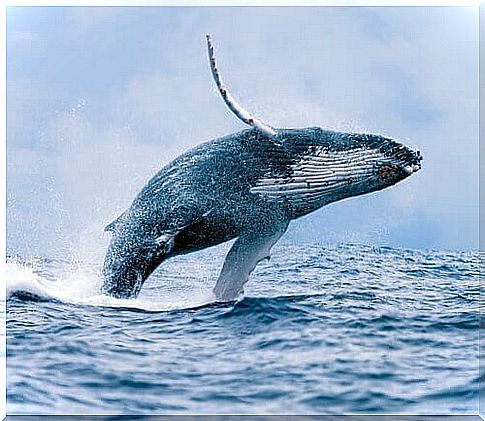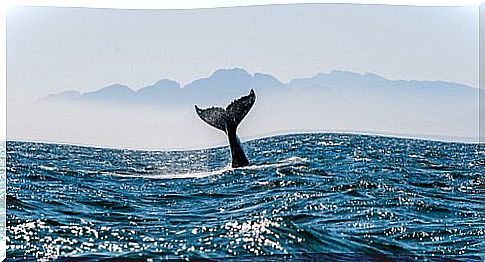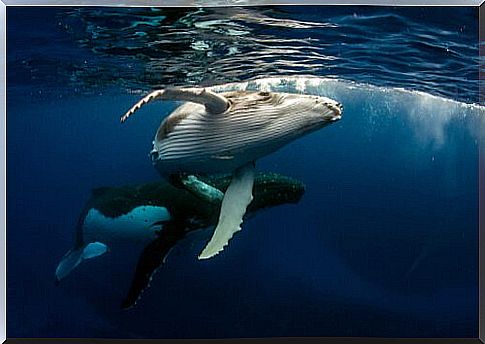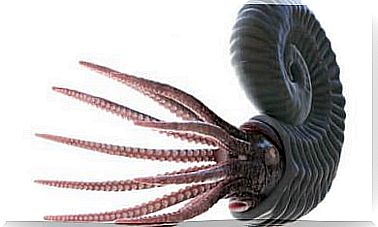The Whale: Habitat, Behavior And Characteristics

The whale is considered the largest species of animal in the world. She is almost hairless and protects herself from the cold of the sea thanks to her body fat.
It is said that the largest animal in the world is capable of reaching 30 meters in length and weighing 150 tons. Today we want to talk about the whale’s habitat, behavior and characteristics. Join us on this exciting tour!
Whale Characteristics
There are different species of whales, but they all have similar characteristics. They have fur, although it’s a fact that many are unaware of.
However, it is so thin and light that it seems to be non-existent. Your blood is warm, so your body temperature is high, especially because of the habitat in which you live.
As their fur is very short and thin, they depend on their body fat to maintain the proper temperature in their body.
Because of this, wise as nature is, baby whales are born with more hair than adults.
In this way, the fur protects them while body fat develops. Once it accumulates, the hair disappears.
Its fins are not very large in relation to its body, as its main way of moving is with its tail, which is very prominent. Normally, your body is full of parasites or barnacles, which adhere to your skin.
His eyes are small compared to his size, and his mouth is nothing more than a slit that goes from one eye to the other, as if trying to crack a smile.

whale habitat
It is not necessary to be wise to guess that the whale lives in the sea, so it is possible that talking about its habitat is somewhat unnecessary.
However, there is more to be said about this. A curiosity is that whales live in areas where the water is warmer.
It is normal to see whales very close to shore in winter, where the water is warmer. That’s why there are different regions of the world where, in the winter months, whales are seen on their beaches.
However, when winter is at its height, they tend to migrate to warmer places. It is curious that larger whales always live in cold regions like the Arctic.
This is because, thanks to their large percentage of body fat, they manage to stabilize their temperature on their own.
While many people believe that whales only live in salt water, this is not true, as you can also find many species of whales in fresh water.
So even if you’ve planned a trip to a place where there’s no beach, just lakes, it’s possible that you might also see whales.

whale behavior
There are certain behavior patterns present in all whale species. Here are some:
- They don’t sleep much. Whales don’t sleep very long for a simple reason: they need to get out and breathe. Although they are aquatic animals, they need the oxygen present in the air throughout their lives.
- They sleep with half a brain. To make sure they’re out for breath, or that they’re able to get away if they’re being hunted by humans, they only let half their brains rest. However, this is enough rest for them.
- Your genitals remain hidden while not being used. As you can imagine, a male whale’s genitals are huge and hiding them allows them to swim faster.
- They swim at a speed of over 48 km/h.
- They are called with a corner. To approach each other and stay close, at least a group of three or four, they communicate with beeps like screams that can be heard from miles away.
- As they don’t have predators, they live in silence exploring their habitat without worries or fears.
That’s all the information we’ve been able to extract about whales, so far. You already know that science is always making advances and, possibly, we will soon know much more about this majestic and imposing animal.









